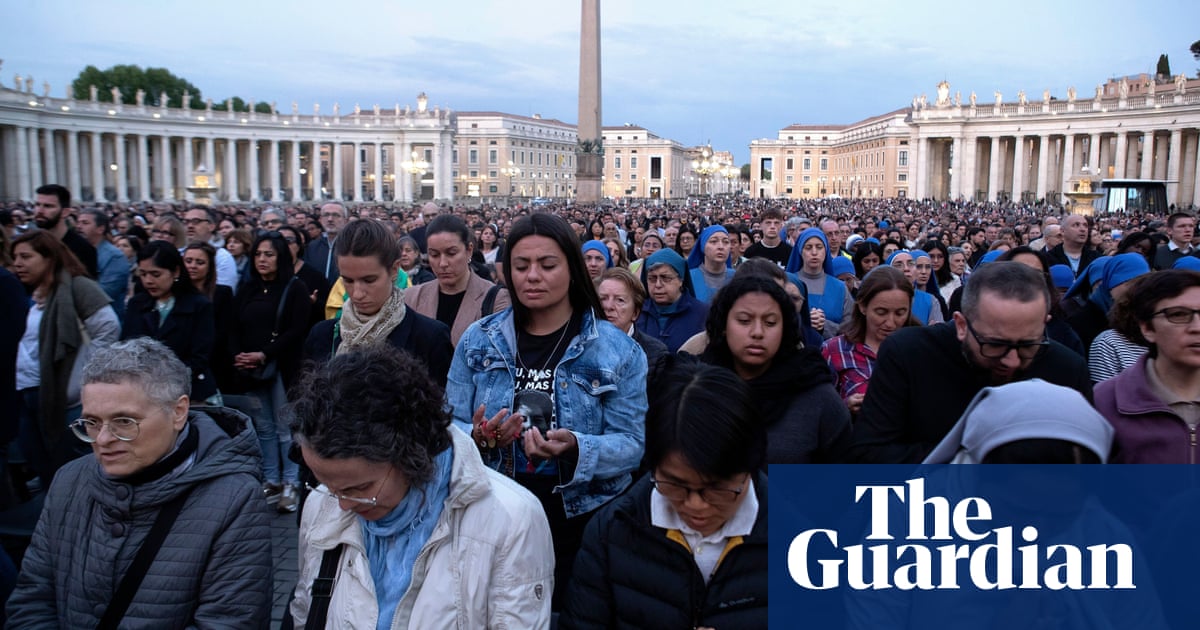Cardinals will meet on Tuesday to decide the date forPope Francis’s funeral, starting a process that will culminate in the election of a new Catholic leader.
The pope, the head of the world’s 1.4 billion Catholics,died at his home in the Vaticanon Monday aged 88 after suffering a stroke. He had been recovering from double pneumonia that saw him hospitalised for five weeks.
Tributes havepoured in from around the globefor the liberal reformer who took over after the resignation of the German theologian Benedict XVI in 2013.
Heads of state and royalty are expected for Francis’s funeral, due to be held at St Peter’s Basilica, with Donald Trump the first to announce he would attend.
“He was a good man, he worked hard and loved the world,” said the US president, despite the pontiff’s criticisms of Trump’s migrant deportation programme.
The funeral should be held between the fourth and sixth days after the pope’s death, according to the Apostolic constitution – so between Friday and Sunday this week. But the details will be decided by the cardinals, who have been summoned for a first of a series of “general congregations” starting at 9am local time.
Cardinals of all ages are invited to the congregations, although only those under the age of 80 are eligible to vote for a new pope in the conclave. The conclave should begin no fewer than 15 and no more than 20 days after the death of the pope.
Some of thepotential contendersmooted before Francis’s death were Matteo Zuppi, a progressive Italian cardinal, Pietro Parolin, who serves as the Vatican’s secretary of state, and Luis Antonio Tagle, from the Philippines.
The pontiff’s death is likely to exacerbate sharp divisions within the curia, with conservatives seeking to wrest control of the church away from reformers.
During his 12-year papacy, Francis – the first Jesuit pope – was a vocal champion of the world’s poor, dispossessed and disadvantaged, and a blunt critic of corporate greed and social and economic inequality. Within the Vatican he criticised extravagance and privilege, calling on church leaders to show humility.
His views riled significant numbers of cardinals and powerful Vatican officials, who often sought to frustrate Francis’s efforts to overhaul the ancient institutions of the church. But his compassion and humanity endeared him to millions around the world.
The pope’s body was moved into the Santa Marta chapel on Monday evening and his apartment formally sealed, the Vatican said.
His remains are expected to be transferred from the Santa Marta residence, where he lived and died, to St Peter’s Basilica to lie in state from Wednesday.
The pope, who wore plain robes and eschewed the luxury of his predecessors, has opted for a simple tomb, unadorned except for his name in Latin – Franciscus – according to his will released on Monday.
He will be buried in Rome’s Santa Maria Maggiore basilica, becoming the first pope in more than 100 years laid to rest outside the Vatican.
His death certificate released by the Vatican said Francis died of a stroke, causing a coma and “irreversible” heart failure. He had been discharged from Rome’s Gemelli hospital on 23 March and was ordered to spend at least two months resting.
But Francis delighted in being among his flock and made numerous public appearances in recent days. He appeared exhausted on Sunday during Easter celebrations, but nevertheless greeted the crowds in his popemobile in St Peter’s Square.
On Monday evening thousands of faithful, some bringing flowers or candles, flocked to St Peter’s Square at sunset to pray for the pope.
He “tried to get people to understand it doesn’t matter your sexual orientation, your race, it doesn’t matter in the eyes of God”, said Mateo Rey, 22, a Mexican student.
“I think that’s the closest to what Jesus intended.”
With Agence France-Presse
